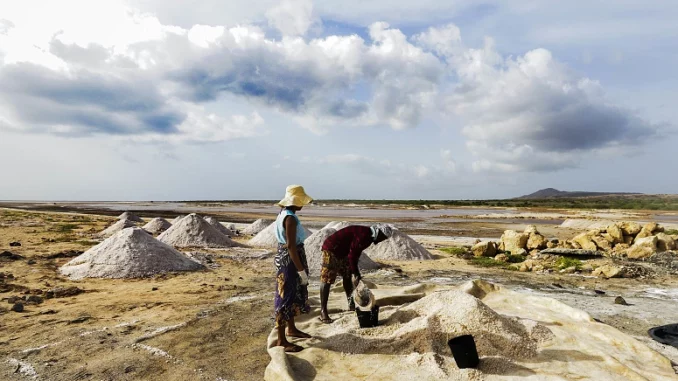
A cooperative was set up 20 years ago to exploit the salt pans of Porto Inglês, on the Cape Verdean island of Maio, a women’s business to meet the demand for iodized salt to treat illnesses.
Today, there is also the ambition to put the salt pans at the service of tourism, but there is a lack of people on the island of Maio to take care of this ancient art, complains Célia Santos Rosa, president of the cooperative.
“There are seven women now, but there used to be a lot more,” she says.
Many have retired, others have fallen ill, she says, as she goes through the list of those who have passed through the wide pavilion where she now leans against a pile of salt sacks.
The space is dominated by the echo of the grinding machine, which leaves a salty dust in the air.
That machine is the only sign of modernity in a process that follows the same artisanal steps as in the past: the salt stones are pulled out with picks or sledgehammers from the salt pans that cover the surrounding land, which is divided into plots, each with its own owner, from whom the cooperative buys the production.
This production can be seen in the piles of salt around the pavilion, where women line up in a movement like an ant trail. They fill buckets with salt stones, which they place on their heads, walking a few meters until they pour them into the grinding machine, which transforms the stones into the powder the consumer knows.
